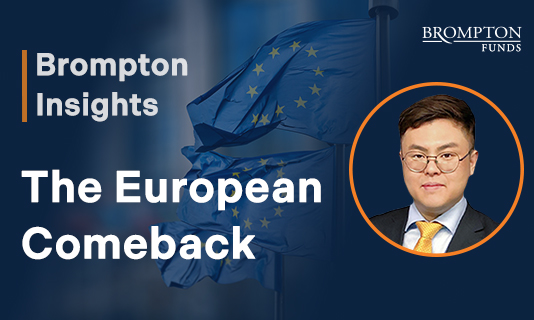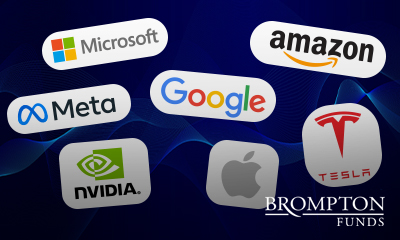April 24, 2024 By: Billy Huang |
| With the U.S. markets trading close to the top end of their valuation range, investors have been hunting for value in Europe. European equities are trading at near historic discounts relative to the U.S. It is not only the deeper than normal valuation discount that makes European stocks look attractive, but also the valuation expansion supported by global economic recovery, cooling inflation, and resilient corporate earnings that underpins our European equity bull thesis. Most investors don’t realize that the STOXX 600 Index total return kept up with the S&P 500 Index over the past 2 years in local currency terms due to improving earnings prospects in Europe. |
|
|
|
| In general, the European economy has higher foreign exposure and is therefore more sensitive to global economic cycles than the U.S. Recent global leading economic indicators have shown signs of improvement in the macro environment. With the global economy on the rise, valuations of European equities, especially the cyclical names, should continue to advance. Goldman Sachs research shows that a one-point rise in global manufacturing Purchasing Manager’s Index (PMI) will bump the 12-month forward P/E of STOXX Europe 600 Index by 1.2%.1 Furthermore, lower inflationary pressure has notably brought down energy costs. The labour market remains tight, but the pace of wage growth is decelerating. This should set the stage for the European Central Bank (ECB) to start its first policy rate cut. Over the past three ECB monetary loosening cycles, the 12-month forward P/E for the STOXX Europe 600 Index rose by 19% on average one year after commencing rate cuts. |
|
|
| Ten out of eleven European sectors are trading at discounts relative to the U.S. peers, in which gaps are significantly wide in Consumer Discretionary, Financials, and Energy. More importantly, several European sectors offer higher or similar earnings growth prospects compared to their U.S. counterparts but trade at lower multiples, namely Industrials, Healthcare, Energy, Telecoms, and Consumer Staples.2 For the most recent earnings season, a growing percentage of European companies discussed key thematic drivers such as artificial intelligence, M&A, and deleveraging, while seeing declines in themes such as economic uncertainty”, energy cost, and inflation. In particular, capital return mentions in European corporate transcripts are trending above 20-year highs and catching up with the rising pace of discussion of this topic in the U.S.3 This is evidenced by the fact that total Q4 2023 shareholder returns (dividends and buybacks) generated by corporate Europe reached close to decade highs at approximately EUR 550 billion. This translates into a 4.4% total return yield (dividend plus share repurchase yield), compared to the highest level of 5.3% in June 2022.4 |
|
|
FY3 Net Income Growth (in USD) |
|
| So how should investors position themselves in European equity markets? Most investors’ portfolios are highly concentrated in the U.S. and Canada, as these are the markets we are most familiar with due to the so-called home country bias. Market access to Europe may be limited to most retail investors as well. On a sector level, Technology is likely the largest weight in their portfolios. European markets provide investors with a more geographically diversified selection of companies outside of Tech, without compromising the upside potential. For example, the most invested large-cap European equity basket “GRANOLAS” (GSK, Roche, ASML, Nestlé, Novartis, Novo Nordisk, L’Oréal, LVMH, AstraZeneca, SAP, Sanofi) has demonstrated an impressive return compared to U.S. broader indices such as the S&P 500 and NASDAQ over the past 3 years. Even compared to the “Magnificent 7”, one of the best-performing U.S. equity baskets, GRANOLAS offers much less volatility. In this vein, adding European equities helps boost risk-adjusted return, or the Sharpe ratio, from a portfolio construction perspective. Although stocks in many industry groups have registered superior returns, such as luxury, pharmaceuticals, autos, banks, capital goods, etc., we do believe it is a stock picking market, and this is especially true for Europe. |
GRANOLAS Outperformed U.S. Indices |
|
GRANOLAS Offers Lower Volatility Than Magnificent 7 |
|
|
Brompton’s ApproachBrompton European Dividend Growth ETF (EDGF) focuses on large European companies that grow their dividends. They tend to be leaders in their respective segments. Their leadership positions allow them to remain resilient in times of uncertainty and their operational scale drives strong economics. |
Billy Huang
Senior Investment Analyst
Billy Huang specializes in equity selection and trading strategies with a focus on global materials, consumer staples and consumer discretionary sectors. Mr. Huang is a CFA Charterholder and is a member of the Toronto CFA Society. He received his Bachelor of Commerce degree from McGill University in 2015, majoring in Finance and minoring in Statistics.
1 Source: Goldman Sachs, “Strategy Matters: How far can equity valuations go?”, March 25, 2024
2 Source: Goldman Sachs, “Strategy Matters: Europe Chasing the ‘American Dream’, Part II”, April 8, 2024
3 Source: Morgan Stanley, “Charts That Caught My Eye”, March 26, 2024
4 Source: Morgan Stanley, “European Shareholder Return Trending at Multi-Year High”, March 20, 2024
This document is for information purposes only and does not constitute an offer to sell or a solicitation to buy the securities referred to herein. The opinions contained in this report are solely those of Brompton Funds Limited (“BFL”) and are subject to change without notice. BFL makes every effort to ensure that the information has been derived from sources believed to be reliable and accurate. However, BFL assumes no responsibility for any losses or damages, whether direct or indirect which arise from the use of this information. BFL is under no obligation to update the information contained herein. The information should not be regarded as a substitute for the exercise of your own judgment. Please read the prospectus before investing.
Commissions, trailing commissions, management fees and expenses all may be associated with exchange-traded fund investments. Please read the prospectus before investing. Exchange-traded funds are not guaranteed, their values change frequently and past performance may not be repeated.
Information contained in this document was published at a specific point in time. Upon publication, it is believed to be accurate and reliable, however, we cannot guarantee that it is complete or current at all times. Certain statements contained in this document constitute forward-looking information within the meaning of Canadian securities laws. Forward-looking information may relate to matters disclosed in this document and to other matters identified in public filings relating to the ETF, to the future outlook of the ETF and anticipated events or results and may include statements regarding the future financial performance of the ETF. In some cases, forward-looking information can be identified by terms such as “may”, “will”, “should”, “expect”, “plan”, “anticipate”, “believe”, “intend”, “estimate”, “predict”, “potential”, “continue” or other similar expressions concerning matters that are not historical facts. Actual results may vary from such forward-looking information. Investors should not place undue reliance on forward-looking statements. These forward- looking statements are made as of the date hereof and we assume no obligation to update or revise them to reflect new events or circumstances.









